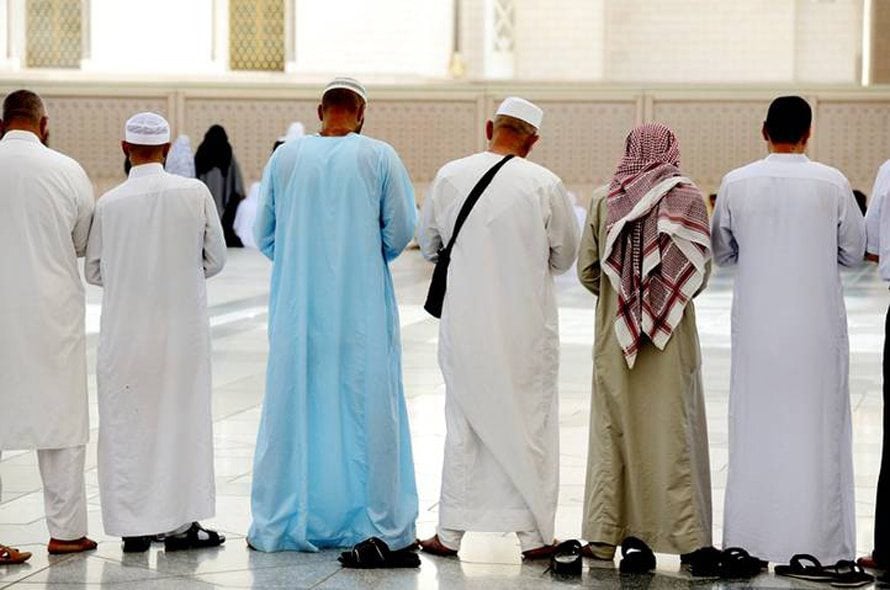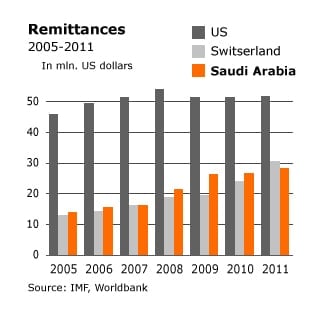
Introduction
The population of the Kingdom of Saudi Arabia in 2020 is estimated at 34.81 million, with an estimated population growth rate of 1.73% compared to the case in 2019, which is 34.22 according to the General Authority for Statistics. So the population will increase in the year 2020 AD by about 7.73 million people within 10 years after the last official census in the year 2020 AD.
The population growth rate had witnessed a remarkable decline to less than 2% in 2018 and 2019, registering 1.8% and 1.67% in the two years, respectively.
The total sex (gender) ratio in 2020 was 137.1 males for every 100 females, given that a large portion of the foreign male labor force lives without their families.
It is noteworthy that the Kingdom carried out the first official census in its comprehensive sense in 1394 AH (1974 CE), and the second census was in 1413 AH (1992 CE). The third census was conducted in 1425 AH (2004 CE). In the censuses series, the 1431 AH (2010 CE) census is the fourth one that the Department of Statistics and Information implemented and transferred to the General Authority for Statistics. The total population in this census was (27,136,977) people.
According to the survey results, the population of Saudi citizens was estimated at around 20.41 million, or 62.69% of the total population of the Kingdom, compared to about 20.07 million in the 2016 demographic survey, with an increase of 1.7%.
The population of Saudi citizens were distributed by gender, at a rate of 50.94% of males, and 49.06% of females of Saudi citizens’ total population in 2017, with a gender ratio of approximately 104 males per 100 females. These rates were close to their counterparts in 2016, where the percentage of males was 50.96%, and females 49.04%.
The number of non-Saudis (expatriates) was estimated at 12.14 million, or 37.3% of the total population in 2017, compared to 11.40 million in 2016, or 36.2% of the total population Kingdom, with an increase between the two years of 6.5%.
Arabic is the official language in the country. Arabs constitute 90% of the total population, while Afro-Asians make up the remaining 10%.
Islam is the official religion of the Kingdom, and the percentage of Sunni Muslims among the Saudi citizens ranges between 85% and 90%, compared to 10-15% of the Shiite Muslims. There are also unspecified numbers of Eastern Orthodox, Protestant, Roman Catholic, Jews, Hindus, Buddhists, and Sikhs, according to the CIA’s World Factbook.
Although there is a large diaspora community of various religions, most forms of public religious expression that contradict the government-sanctioned interpretation of Sunni Islam are restricted. Non-Muslims are not permitted to acquire Saudi citizenship, and non-Muslims are also not permitted to hold worship places.

Age Groups
According to the CIA World Factbook, Saudi society is classified among the young societies, where 24.84% of the total population is under the age of fifteen, according to 2020 estimates. 65.58% of the population falls in the age group (15-54 years); 5.95% of the total population is in the age group (55-64 years), and those who have reached the age of 65 or over constitute 3.63% of the total population.
The 2018 Family Health Survey results revealed the total fertility rate of all women in the age group (15-49), reaching 1.92 births per woman, while the total fertility rate for Saudi women was (2.33) births per woman.
As for the average life expectancy at birth, the population in Saudi Arabia was estimated at around 76.4 years in 2021 AD (74.1 years for males, 78.07 years for females), according to the CIA World Factbook.
Areas of Habitation
Historically, the Saudi population has been predominantly nomadic or semi-nomadic, and they have become more stable since the discovery of oil in the 1930s. Most of the economic activities – and with it the country’s population – are concentrated in a wide area across the middle of the peninsula, from Dammam in the east, passing through Riyadh in the interior, to Makkah Al-Mukarramah – Medina in the west near the Red Sea.
Due to the vast area of the country (2.15 million km2), Saudi Arabia is one of the least populated countries globally, and in 2020 it recorded 16.2 people / km2. The urbanization rate is 2.17%, and the Kingdom’s population is distributed geographically into 13 administrative regions. Five regions accounted for about 80% of the total population of the Kingdom, according to 2019 estimates. Total population, respectively.

Ethnic Groups

Muslims in prayer around the Kaabah in Mecca / Photo ShutterstockThe overwhelming majority (90 percent) of the native population of Saudi Arabia is Arab. Some Saudis are of mixed ethnic origin, being descendants of Turks and Iranians. Around 10 percent have an African or Asian (Indonesian or Indian) background, most of whom immigrated as pilgrims and resided in the Hijaz region along the Red Sea coast.
Since the oil boom in the 1970s, many non-nationals, including Arabs from nearby countries, and significant numbers of Indians, Pakistanis, Bangladeshis, Indonesians, Filipinos, and Westerners, are employed in the kingdom. Most of them work in the oil and construction industries as teachers, computer technicians, consultants, and domestic workers.
Non-Citizens
Saudi Arabia is one of the world’s largest labor markets, and the number of non-Saudis (expatriates) was estimated at 13.10 million, or 38.4% of the total population in mid-2019, compared to 12.64 million in 2018, with an increase between the two years of 3.5 %. Non-citizens work mainly in the industrial and service sectors.
The kafala system (sponsorship) is the practice by which a foreign worker is invited via a business contract to work in Saudi Arabia under a kafil (employer) sponsorship. The system requires the foreign worker to seek permission from his sponsor to change jobs or leave the country. This subjects workers to abuse and control by their employers.
The Ministry of Labour announced in May 2012 that it had banned all restrictions an employer might enforce on a worker, such as not being able to change jobs or the withholding of passports. The Saudi Labour law was amended in an attempt to scrap the sponsorship system. Technical terms were changed, such as employer instead of sponsor and transfer services instead of transfer sponsorship. Furthermore, the relationship between employer and worker is to be defined in a contract.
Religion
The Ministry’s move is seen as a positive step to protect migrant workers’ rights. Yet, according to Human Rights Watch, Saudi Arabia would also have to amend its Residency Law to remove the system’s risks fully. Migrant workers’ residency permits are linked to their employer’s residency, requiring them to obtain permission from their employer (who is considered their sponsor) to change jobs or leave the country. The private employment agencies, which the workers’ sponsorship would be transferred to, also pose a risk to workers since such agencies do not have a clean record.
Human Rights Watch has documented cases in which existing Saudi employment agencies have abused migrant workers, from deception about employment contracts and refusal to help workers leave employers to physical abuse. While recruitment agencies are not allowed to charge workers any fees, there have been cases in which agencies have violated this rule but were not penalized.
Saudi Arabia’s population is Muslim: 85-90 percent are Sunni, the remaining 10-15 percent are Shiite. Sunnis adhere to an ultra-orthodox branch of Islam, generally known as Wahhabism.
The branch takes its name from the alim (cleric) Muhammad ibn Abd al-Wahhab, who was born in 1703 in the village of Uyayna in Najd. Throwing in his lot with the emir of the neighbouring oasis al-Diriya, Muhammad ibn Saud, the Wahhabi faith spread across the Arab Peninsula in the wake of the military expansion 18th century.
Muhammad ibn Abd al-Wahhab’s followers actually call themselves Muwahhidun (Unitarians), ‘those who believe in the unity of God’ (tawhid). At its core, Wahhabism strives towards a strict observance of the doctrine of the first Muslims, the Salaf, rigorously abandoning unorthodox practices which have been embraced by Muslims over time (such as the reverence of holy men).
Based on a ruling issued by the Prophet Muhammad, Wahhabism does not tolerate any other religion besides Islam in the land where it was revealed to the Prophet Muhammad.
The Wahhabis activities have also put severe pressure on the position of the Shiites in Saudi Arabia. The Wahhabis regard Shia Islam as heresy and strove against the Shiites from the early days, often with violence. Since Sunni Islam is the only publicly-observed religion in Wahhabi-controlled territory, public displays of faith by Shiites were long forbidden and suppressed. Nowadays, these are tolerated to a certain extent. Shiites nonetheless remain second-class citizens in their own country.
Public display of faith of non-Muslim migrants (mainly Christians and Hindus) by a summons to prayer or having a space for worship is prohibited by law. Many non-Muslims can, however, observe their religious practices in their private houses or residential compounds.
Migration and Refugees

Saudi Arabia is one of the top migrant destinations worldwide, preceded only by the United States and Germany. Most of the migrants in Saudi Arabia are from South and East Asian countries. United Nations records show that, between 2005 and 2010, the net number of migrants residing in Saudi Arabia was 1,055,000.
The total number of migrants recorded from 1950 to 2010 was approximately 6,237,000. Reports also indicated that there are 13 million immigrants on the Kingdom’s territory in 2020.
Many immigrants in the Kingdom of Saudi Arabia explain the high rate of remittances sent by migrant workers to their countries, and Saudi Arabia began implementing programs to localize jobs, including entire sectors that expatriate workers controlled, to reduce unemployment rates and provide job opportunities for Saudi youth.
In March 2021, Saudi Arabia began implementing reforms in labor contracts related to foreign workers, which ended the sponsorship system’s work for decades, such as regulating the relationship between employers and old workers from outside the country.
Among the most prominent reforms introduced by the new system is abolishing the requirement that a sponsor is present to enter the country and work in it. Also, the new system abolished the authority granted to the employer in terms of insurance and residency renewal and his ability to cancel work permits at any time he wanted.
Remittances from foreign residents living in Saudi Arabia increased by 19.25% during the year 2020 AD, to reach $ 39.92 billion, compared to about $ 33.47 billion during 2019.
Remittances from Saudi Arabia during the year 2020 AD contradicted the bank’s expectations of a decrease in remittances from workers abroad around the world due to several main factors, namely weak economic growth rates, employment in host countries of immigrants, declining oil prices, and the depreciation of the currencies of the countries sending remittances against the US dollar.
Latest Articles
Below are the latest articles by acclaimed journalists and academics concerning the topic ‘Population’ and ‘Saudi Arabia’. These articles are posted in this country file or elsewhere on our website:






